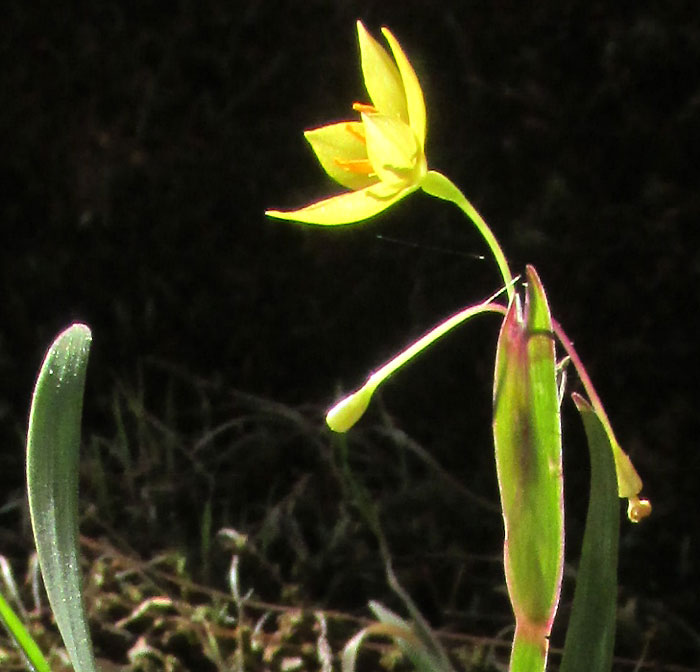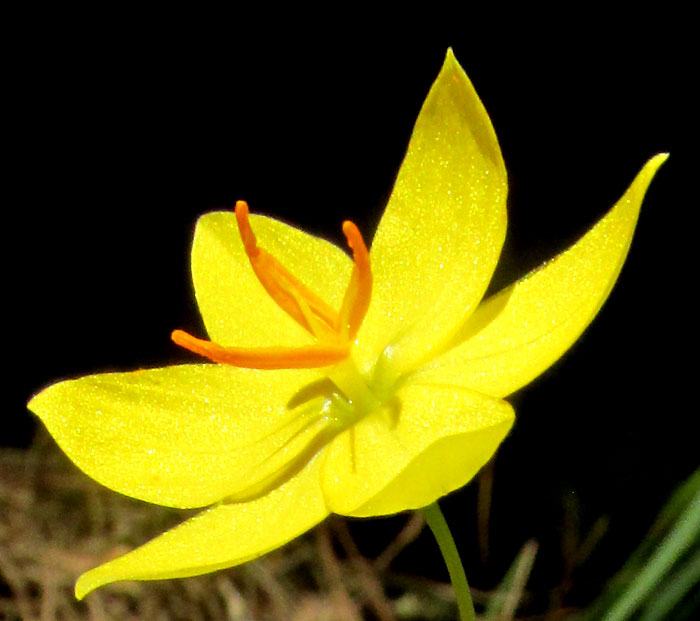Excerpts from Jim Conrad's
Naturalist Newsletter
entry from field notes dated January 19, 2023, taken along steep, one-lane gravel road ascending forested, northeast-facing mountain slope, elevation ±2,380m (7600 ft); bedrock of Cretaceous limestone; on the south side of Pinal de Amoles, Querétaro state, MÉXICO, (N21.134°, W99.629°)
SISYRINCHIUM CONVOLUTUM

The above grew along the trail in a spot often shaded by tall pines and oaks. Up closer, important features for identification became more apparent:

Flowers with inferior ovaries arise from two leafy, scoop-shaped spathes, one nested within the other, their sides closely compressed. The spathes are jointed to the top of a flattish stem, and all the parts, including the leaves, are hairless.
This general arrangement of flowers with six petal-like tepals atop what looks like several grass blades is well known to North American wildflower admirers, though the best-known species in this group are blue-flowered, and known as blue-eyed grasses. They're the genus Sisyrinchium in the big Iris Family, the Iridaceae. However, Sisyrinchium contains about 80 species, with Mexico home to maybe 40 species, and 12 species documented just in the Bajío region of upland central Mexico. Often the species are quite similar to one another, so you just have to "do the botany."

One important field mark for this species is apparent in the picture atop this page: The plant's leaves are fairly wide, not nearly as narrow as the grass leaves seen behind the plant. In the above flower, the three orangish, pollen-producing anthers are relatively long and their stem-like filaments join at their bases to form a "staminal column" that's taller than in some other species. In general, this is larger and more robust-looking than most other Sisyrinchium species.
These details and others lead to SISYRINCHIUM CONVOLUTUM, a fairly common species in Mexico's highlands south through Central America into northwestern South America. Mostly the species occurs in pastures and clearings in conifer forests, usually between 2000-3200m (6500-10,500ft).
No English name is available for this pretty wildflower, other than blue-eyed grass, which won't do for this species. In Spanish, sometimes it's referred to as zacatillo, but that just means "little grass" and is used for lots of plants. The species simply has no good commonly used name.
Nor can any documented medical use of it be found, or any other use. This is simply a pretty little wildflower whose blossoms issue no particular fragrance, but which certainly is eaten and ruminated on by miscellaneous herbivores thinking it's just another grass.